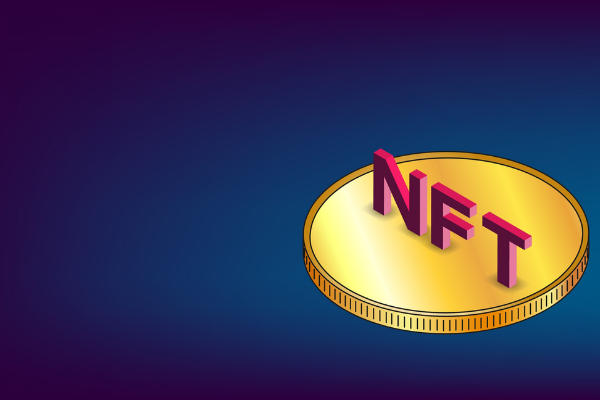Insights
INSIGHTS
All Topics
NFTs for good: how charities can fundraise with NFTs
03 Jan 2025by Mary Wessel
We explore the new phenomenon that is the non-fungible token and show how charities can use them for fundraising
Non-fungible tokens are big news of late, with astronomical sums of cryptocurrency being paid for intangible artwork. (If you haven’t heard of NFTs, you might find our explanation handy.)
Many charities have already benefited from the frenzy. NFTs can be a great way to make money through auctions, allowing organisations to raise funds in a transparent way, while engaging a new audience and strengthening brand awareness.
So if you want to get in on the action and raise money from NFTs, here are a few pointers to get you started.
Get your ambassador to create an NFT
Maybe you have a great ambassador for your charity who has a strong following. You could get them to create some artwork (whether that be digital art, film, music) and then auction it off using a marketplace such as Rarible, OpenSea or Foundation (think of them like Etsy or Ebay).
The process for minting an NFT differs slightly from site to site, but this ‘how to’ guide by Foundation gives an example of what’s involved. Most marketplace platforms require users to use a cryptocurrency, so you’ll need to set up a digital wallet in the relevant currency to be able to use it (which is very straightforward to do).
Take Edward Snowden, American whistleblower and President of the Freedom of the Press Foundation. In April 2021, he auctioned off an NFT on Foundation which raised more than $5.4 million (£3.8 million approx).
Stay Free’ is a signed work which combines “the entirety of a landmark court decision ruling the NSA’s mass surveillance violated the law, with the iconic portrait of the whistleblower by Platon”.
He donated the funds to the non-profit and, using Aerial, earmarked part of the funds to offset carbon emissions from the transaction.
Collaborate with existing NFT creators
There can be big bucks involved in NFTs. In March 2021, digital artist and NFT creator, Beeple, auctioned off ‘Ocean Front’ which raised $6 million (£4.24 million approx) for the Open Earth Foundation.
If an NFT creator wants to donate auction proceeds to your charity, they can auction it off using their usual preferred platform. They’ll just need to set the payout address to your organisation’s cryptocurrency wallet address (which you’ll need to set up in advance).
Another option is to use a platform like The Giving Block, which helps charities to get set up to accept crypto donations, as well as actively fundraise crypto. It already supports over 200 US non-profits.
Create an NFT using your own creative assets
Does your charity have its own creative assets that could be sold as an NFT?
Newly established Covid:aid is the first UK charity wholly dedicated to supporting people of any age affected by the pandemic. It auctioned off its logo as an NFT, offering the winning bidder the chance to be the world’s first founding charity crypto-philanthropist.
The auction was held on Foundation, and while it only raised a small amount of money, it’s an example of how to think creatively about using NFTs to tap into new audiences and create a buzz.
Work with a corporate partner to create NFTs
This can be a win-win for both charity and corporate: driving brand awareness for both and raising funds for the charity. In the US, for example, Taco Bell sold 25 taco-themed NFT GIFS (NFTacoBells) to support the Taco Bell Foundation’s Live Más Scholarship.
The NFTs sold out within 30 minutes, with one selling for $3,646 (£2570 approx). The foundation will also receive 0.1% of every subsequent sale, meaning the foundation will continue to benefit long after the initial auction. (NFTs can contain smart contracts, meaning, for example, royalties can be built into them).
Keep an eye out for DoinGud
DoinGud is a new NFT platform set to launch in summer 2021. Every sale on the platform allocates a minimum of 5% to a social impact organisation, as chosen by the NFT creator.
It will give buyers the opportunity to pay using a credit card or cryptocurrency, broadening the range of potential buyers. And it’s committed to minimising its environmental impact by using an energy efficient Proof of Stake infrastructure.
What about the environment?
The majority of NFT sales use Ether (rather than Bitcoin or any other cryptocurrency). While cryptocurrencies are notoriously bad for the environment, Ethereum 2.0 – set to launch over the next few months – is predicted to reduce its energy usage by an estimated 99.95%.
Its current energy usage has been compared to that of Peru and this transition to a new infrastructure will reduce its energy consumption to that of a small town, or around 2,100 American homes.
This is a massive leap forward in terms of making cryptocurrencies eco-friendly.
For more on tech, check out our podcast on how to access high-tech at low-cost:
Mary Wessel
More on this topic
Related Content
Recommended Products
Recommended Products
Our Events
Charity Digital Academy
Our courses aim, in just three hours, to enhance soft skills and hard skills, boost your knowledge of finance and artificial intelligence, and supercharge your digital capabilities. Check out some of the incredible options by clicking here.

























